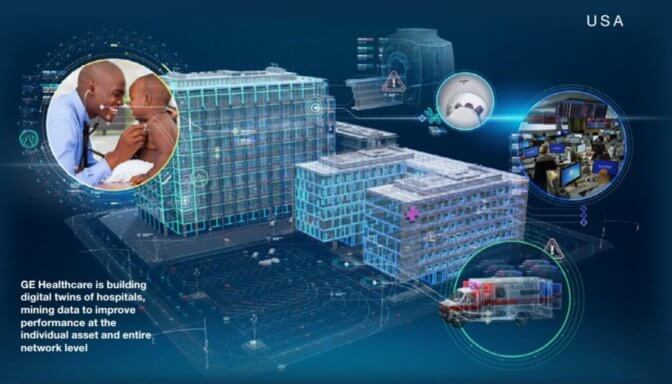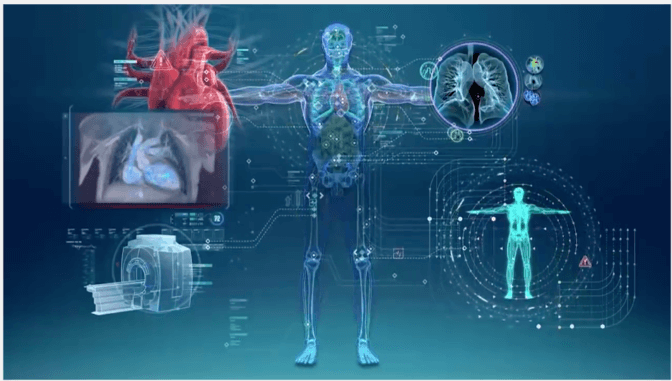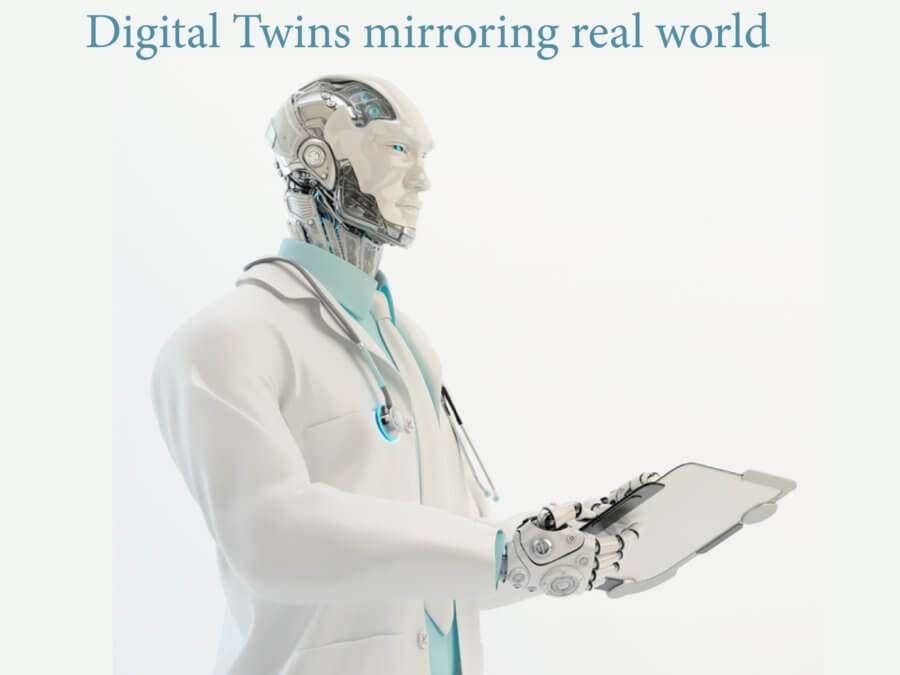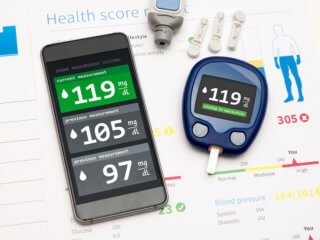Digital Twins in healthcare
What are Digital Twins?
A Digital Twin provides a safe environment in which you can test the impact of potential change on the performance of a system by experimenting on a virtual version of the system that is fed by abundant data from the real system. In other words, to play “what if?” with system dynamics. This method can be a machine or a process, or even a living body.
Using Digital Twins, different possible solutions can be tested virtually, before implementing actual changes or procedures. Therefore, by using Digital Twins, you can predict problems before they occur, find optimal solutions, and reduce risks.
While virtual models have been around for decades, Digital Twins represent a huge step forward because it uses machine learning and big data technology, harnessing lots of sensor data, machine-to-machine communication and automation technologies. This technology can record, control, and monitor the dynamic process. Therefore, the performance of a system or its condition can be monitor while it is working, by analysing changes in the Digital Twin.
This way, it bridges the gap between real and virtual systems. Digital Twins take out much of the ‘simplified’ out of the definition of a model. Because smart machines are better than humans at accurately and consistently capturing and communicating data, this technology can enable people to pick up on inefficiencies and problems sooner, saving time, money, and lives.

Image courtesy of Innovate
The concept of a Digital Twin: The physical object in real space provides data to the digital object in virtual space, which analyses the data, learns from it, and then sends information back to the physical object to improve the performance of the physical object.
Digital Twins are now within reach because of some significant technological advances. One of the most important is cloud computing. Using the Industrial Internet of Things (IIoT), you can develop, deploy, and operate industrial apps at the edge and in the cloud, for example using Predix or FIWARE. Because of the increased computing power, it is now possible to use big data from many sensors and facilitate machine learning.
Digital Twins were probably first used by NASA to develop space crafts. Nowadays, more and more systems have Digital Twins. There are Digital Twins of farms, jet engines, whole planes, cars, coffee machines, factories that make machines, oil drills, and wind-parks.
Digital Twins are being used for hospital planning and management, and are being developed for the human body too. Using Digital Twin technology, a new windmill in a wind park can learn from the older windmills.
When its sensors show unusual patterns, it can ask the older windmills if they have experienced such models and whether it was associated with events. It can then adjust its settings to prevent this problem or call for specific maintenance before any damage is done.
Research and development of Digital Twins are led by some large companies like IBM Corporation, General Electric, Oracle Corporation, Microsoft Corporation, PTC Inc., ANSYS Inc., and Dassault Système. Many academic centres such as Massachusetts Institute of Technology (MIT) and the European Business School, Reutlingen University also research this new technology. Leading researchers include Michael Grieves (Centre for Advanced Manufacturing and Innovative Design, Florida Institute of Technology), Cor Verdouw (Wageningen Agricultural University), Sudhir Sharma (Isenberg School of Management, UMass Amherst), and Donna H. Rhodes (MIT).
Digital Twins and health care
Digital Twins can play two distinct roles in health care: hospital design and management, and patient care.
Digital Twins of hospitals are a reality and are on the market, for example, developed by the GE Healthcare Camden Group. These models help to plan the beds, schedules of staff, and operating rooms to maximise the care to patients while keeping a check on the costs.

Image courtesy of Twitter
A Digital Twin of a hospital allows managers to try out solutions to problems such as shortage of hospital beds, cues for the operating rooms, or spread of germs, before implementing the best performing solution.
Digital Twins of complete human beings are still a futuristic dream now. However, some headway has been made with for example Dassault’s commercially released “Living Heart”—the first realistic model of a human organ that accounts for electricity, mechanics, and blood flow in the heart. The software can turn a 2D scan from an individual human into a personalized full-dimensional model of his or her heart.
The user can manipulate it—stick in pacemakers, reverse its chambers, cut any cross-section, and run hypotheticals. The Digital Twin has been pieced together from information shared by numerous research groups. To make a Digital Twin of a whole human body, all organs need to be modelled and integrated. Since many organs are more complex than the heart (e.g. the brain) this may still take a lot of work to achieve.

Image courtesy of LinkedIn
A Digital Twin of a human body can allow doctors to discover ailments before they are apparent, experiment with treatments, and prepare better for surgeries.
Issues hampering the growth of Digital Twins
Digital Twins have already shown the potential to improve product quality and reduce production and maintenance costs, and will undoubtedly become more important in the near future. However, there are at least three issues that need to be addressed.
- Firstly, by using the Internet of Things and cloud computing, the systems become sensitive to hacking and viruses. Hackers can potential steal private, confidential or valuable information. This is one of the leading factors restraining the market growth in Digital Twins. Therefore, developers must address the digital ethics issues raised by different parties interacting with the data from not just the company, but also its partners and customers. This will require developers to think about the value of the data and its contributions to the business. This is especially critical with personal medical records.
- Secondly, developing Digital Twins is a considerable investment. Therefore, it may only be possible for large companies with the necessary capital and human resources, creating an oligarchy. However, this may not necessarily be the case. With a common platform on the cloud and a modular organisation, smaller companies can contribute particular modules that others can buy in to (similar to the statistical and graphical environment R). However, some regulation needs to be in place to achieve this.
- Thirdly, this technology requires equipment and know-how that is not equally distributed, and Digital Twin technology could thus widen the gap between the rich and the poor, the urban and the rural. In the case of Digital Twins of human organs, doctors and researchers have to be interested in using Digital Twins, and then they have to be taught how to use them correctly. Therefore, capacity building is significant to ensure that doctors can use Digital Twins.
How does the future look for Digital Twins?
Data is the new gold. Digital Twin technology is one of the most lucrative markets in the 21st century. According to a further market research “Digital Twin Market – Forecast to 2023”, the Digital Twin market is expected to grow at a CAGR of 37.87%, to reach USD 15.66 Billion by 2023. The Asia-Pacific region was holding the most significant share of the overall Digital Twin market in 2016, and the market in this area is expected to grow the fastest.
The growth of Digital Twin market in Asia-Pacific region is driven by the increasing use of the Internet of Things for industrial applications in China, India, and Japan. Furthermore, the rising number of industries in this region leads to the growing demand for Digital Twins for use in manufacturing.

Image courtesy of TechSciResearch
Projected growth of the Digital Twin market
Some of the big players in the tech industry are already working in the Digital Twins market. Opportunity to make a mark in the industry and a ripe market for this technology is something which no big player would want to miss out on.
Image credit: www.istockphoto.com


















Dr. Hempel…I am a senior analyst at Frost & Sullivan in the Digital Health team. I would be very interested in having a call with you to explore digital twins in medicine a little more. If you are open to a brief discussion, please drop me a note.